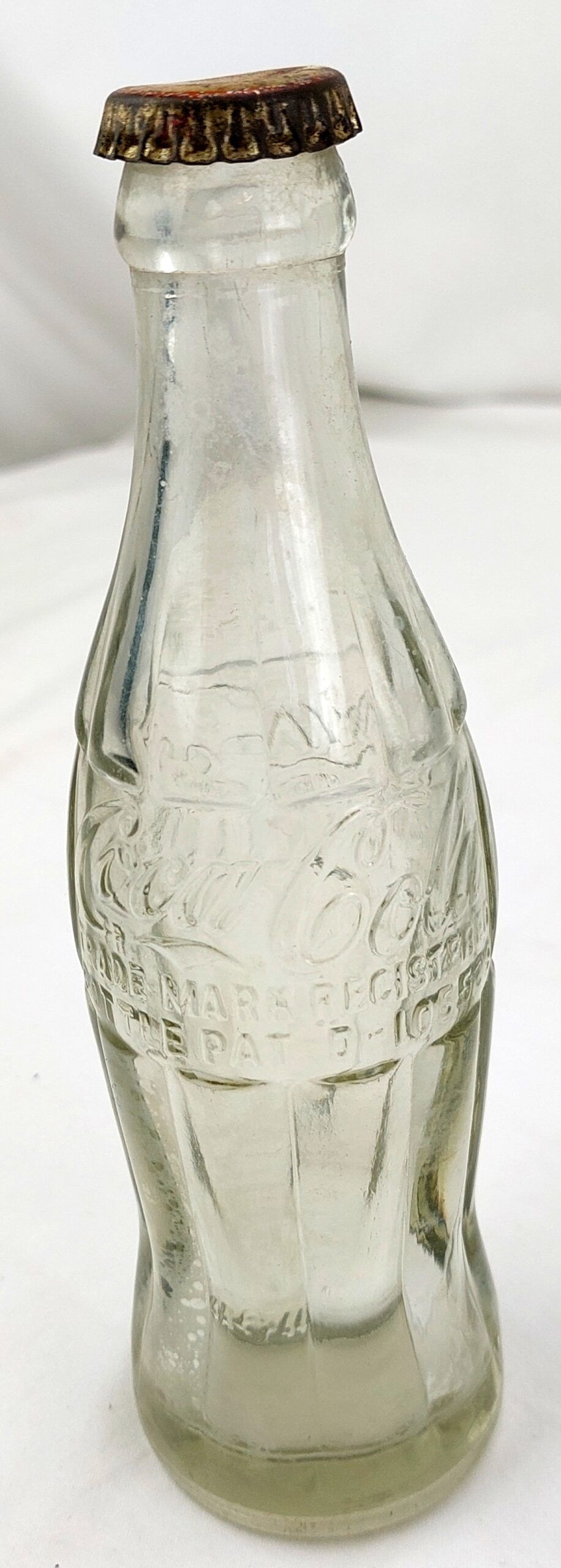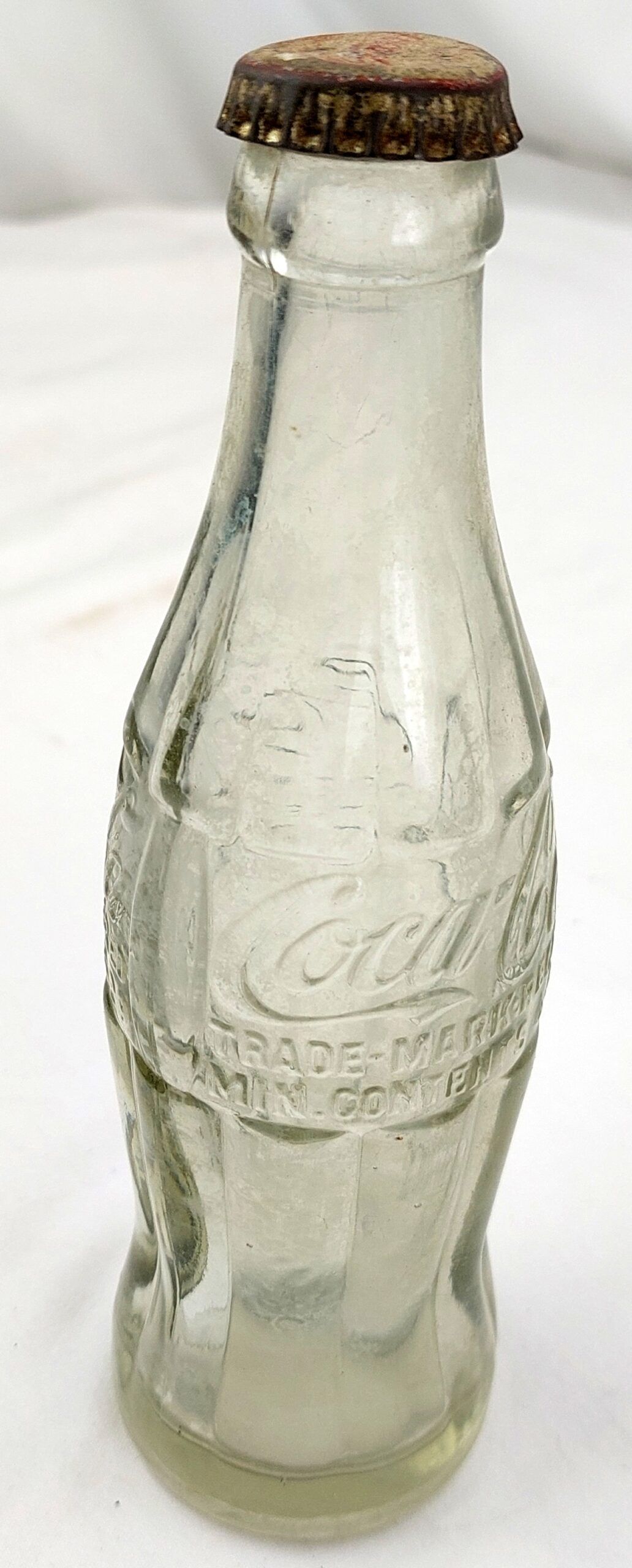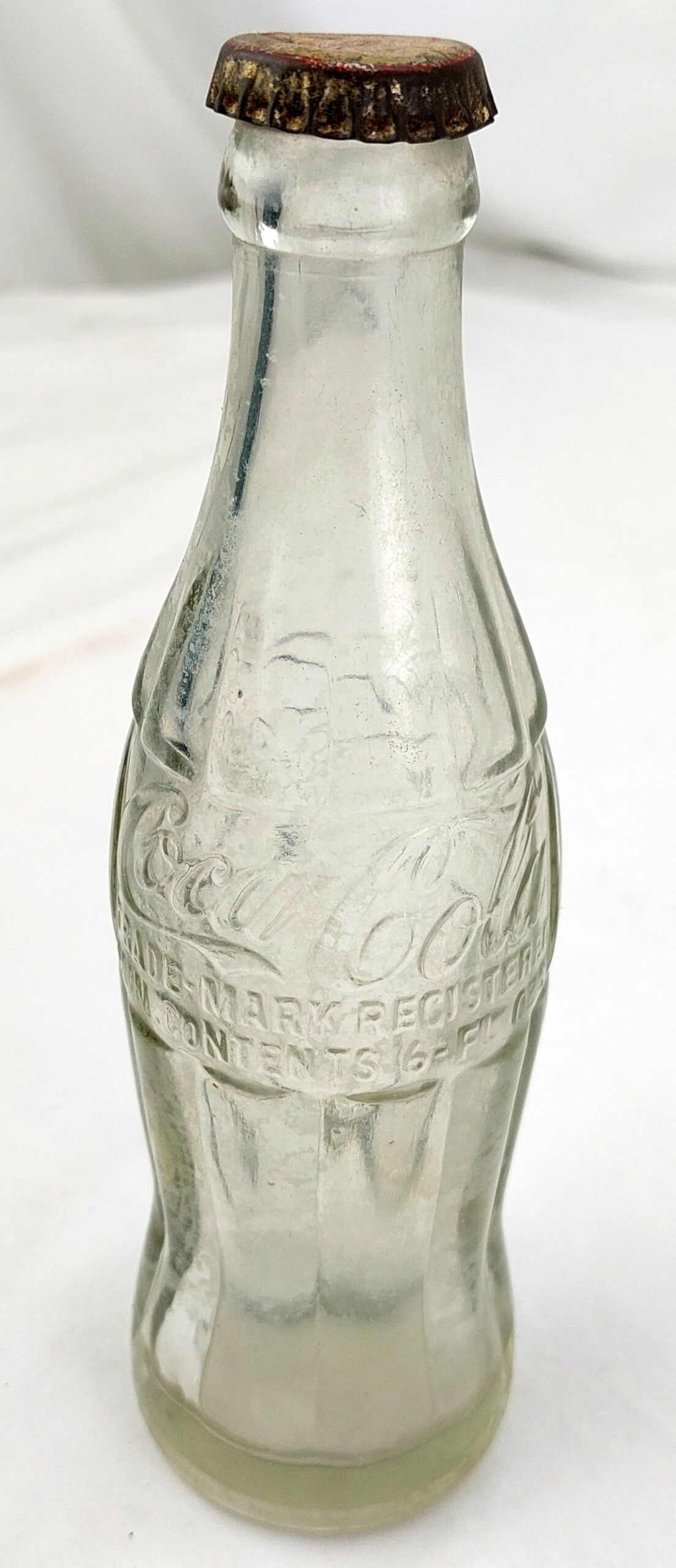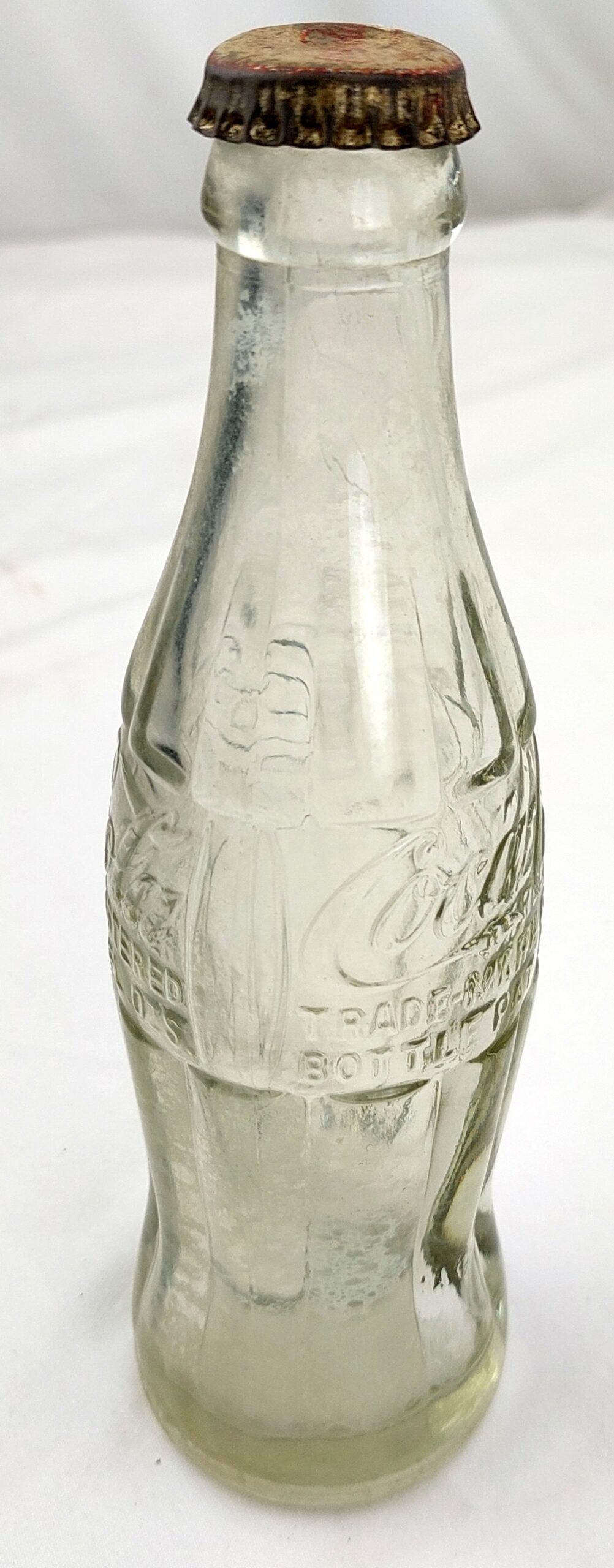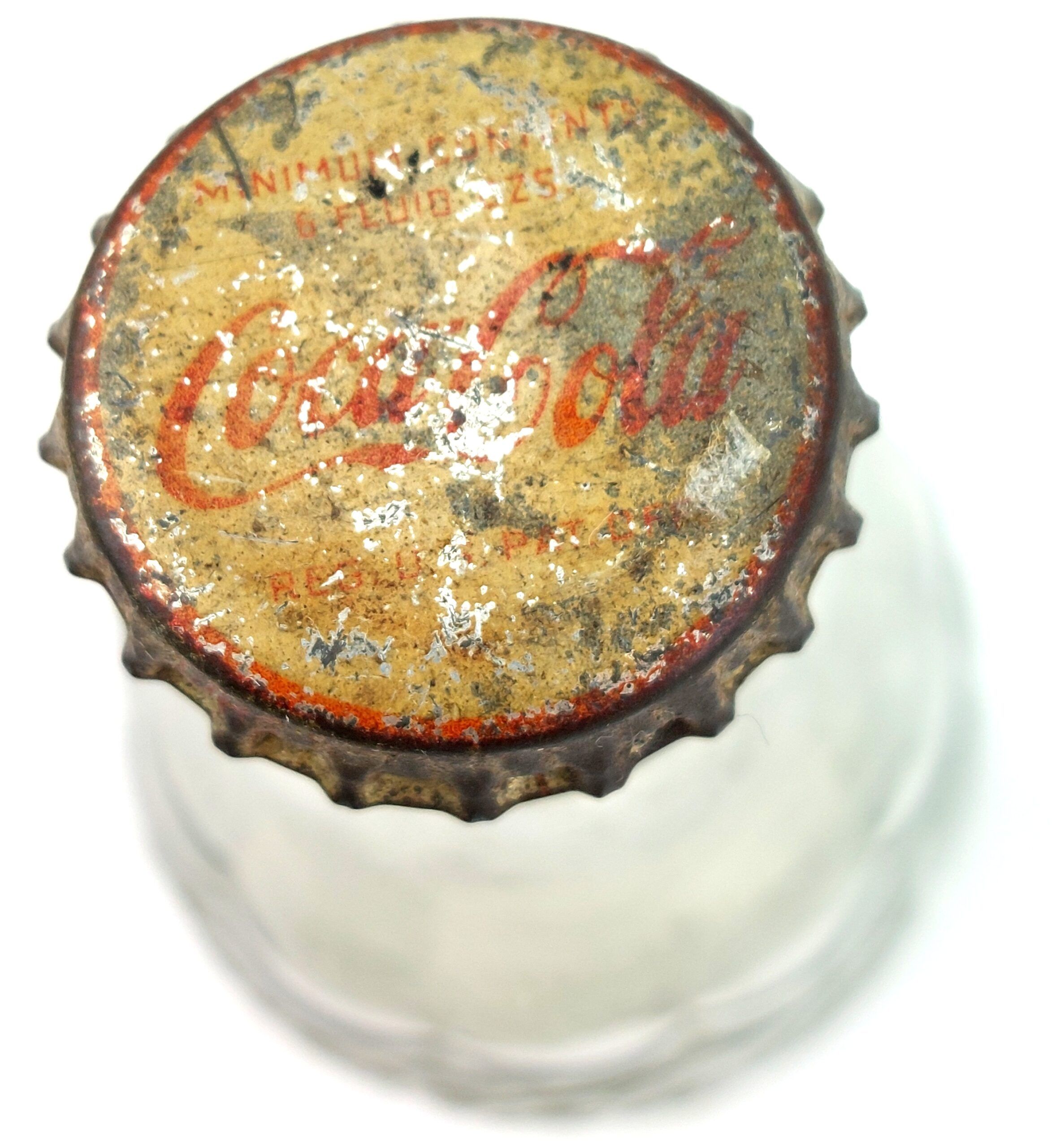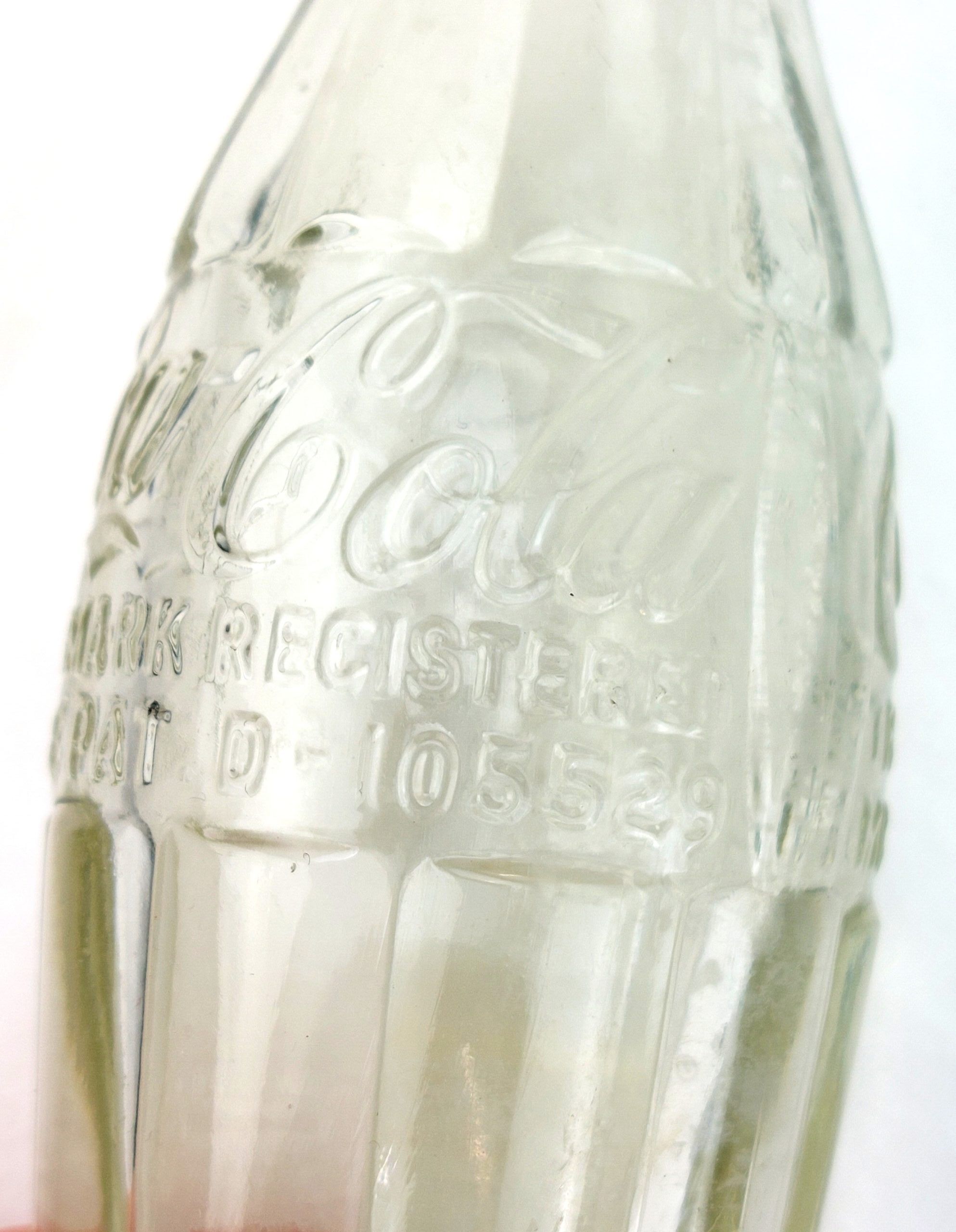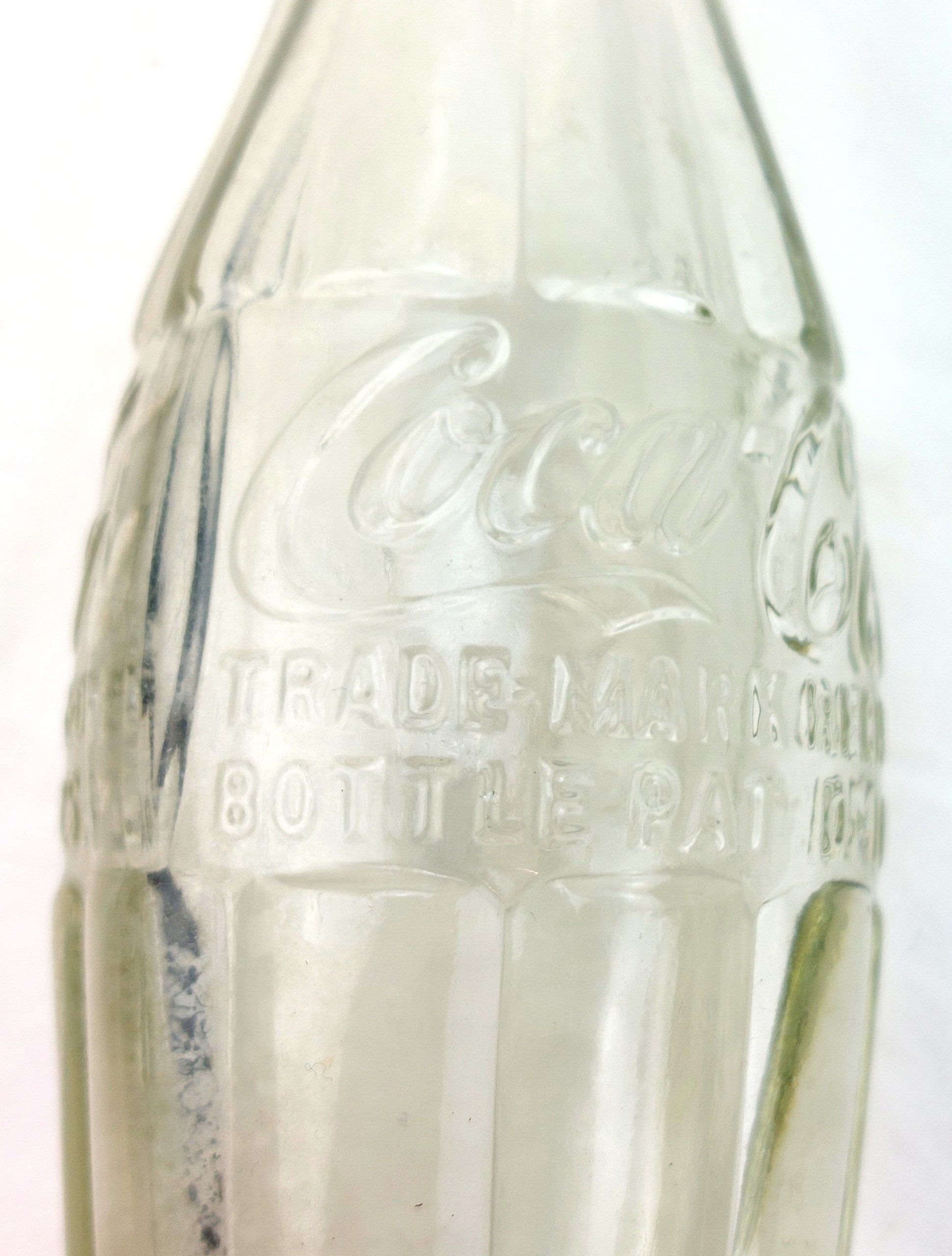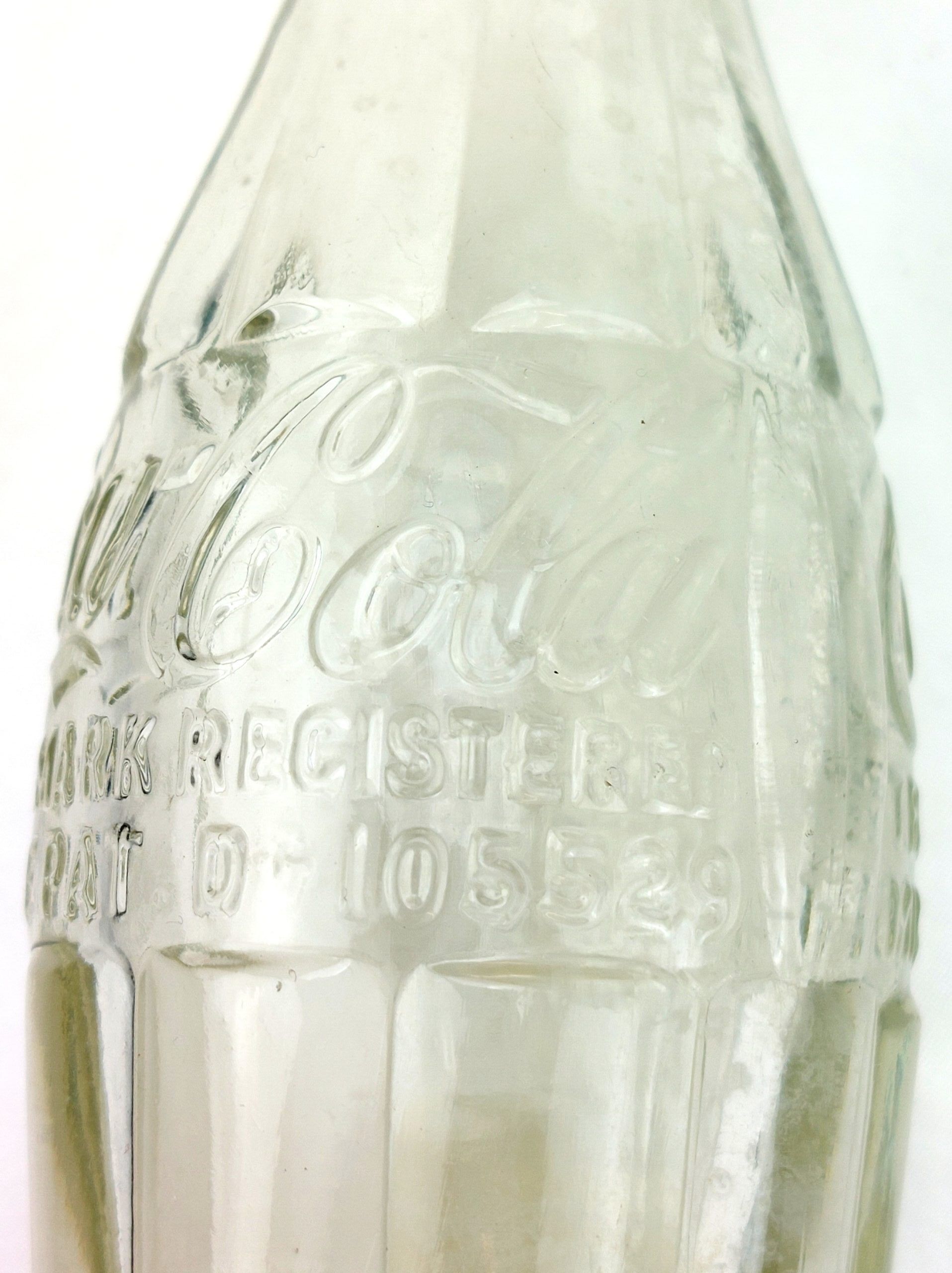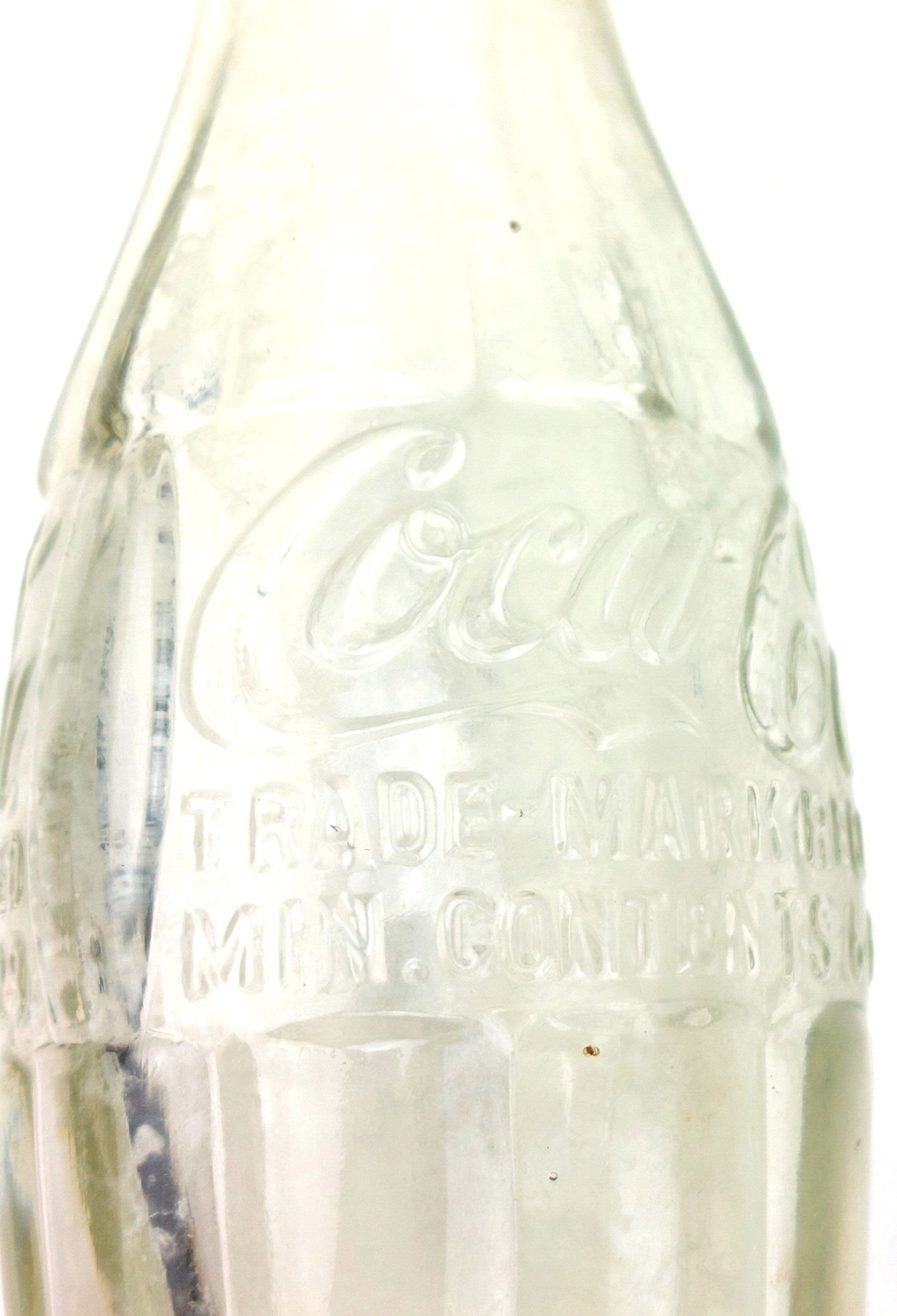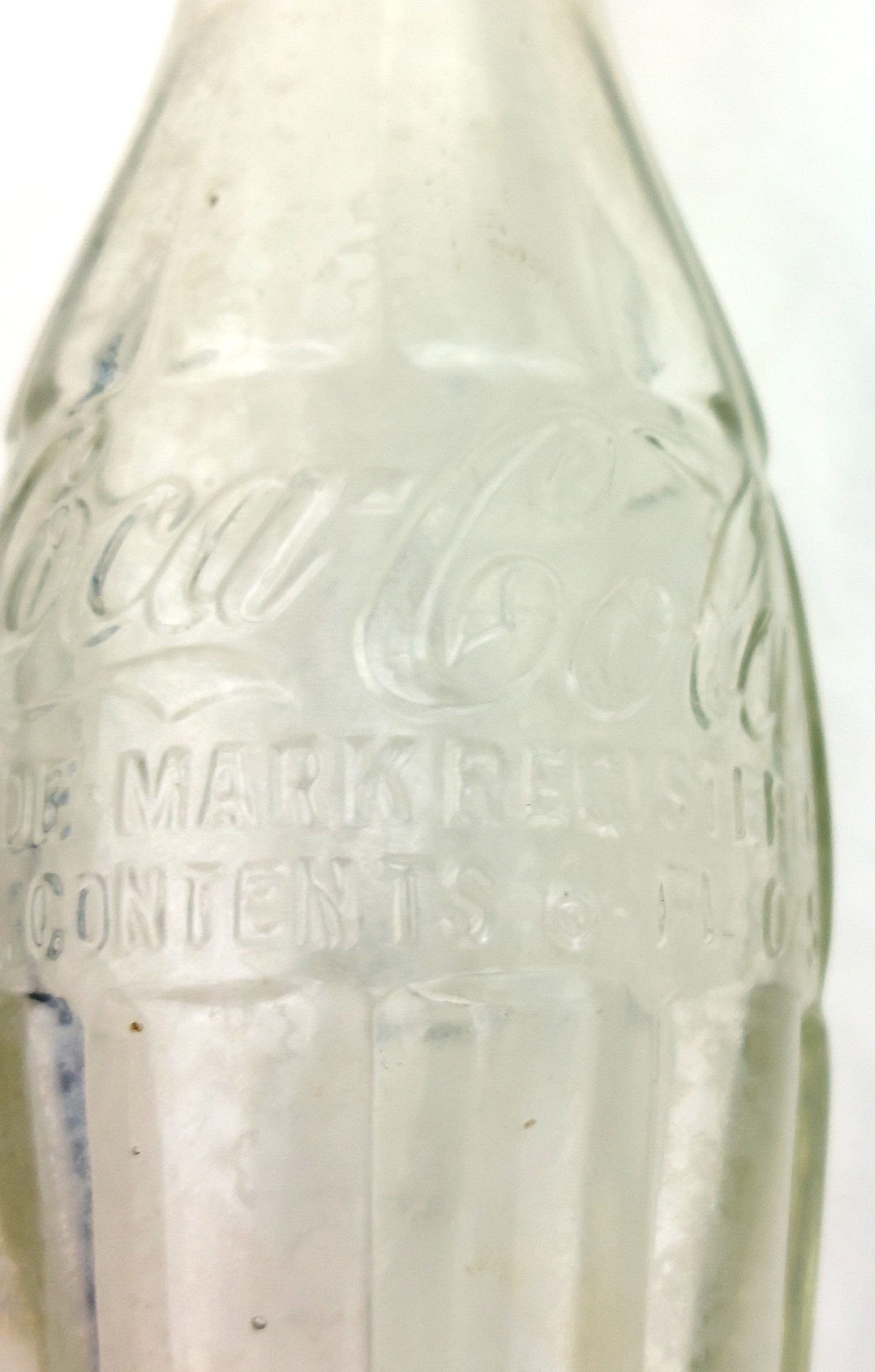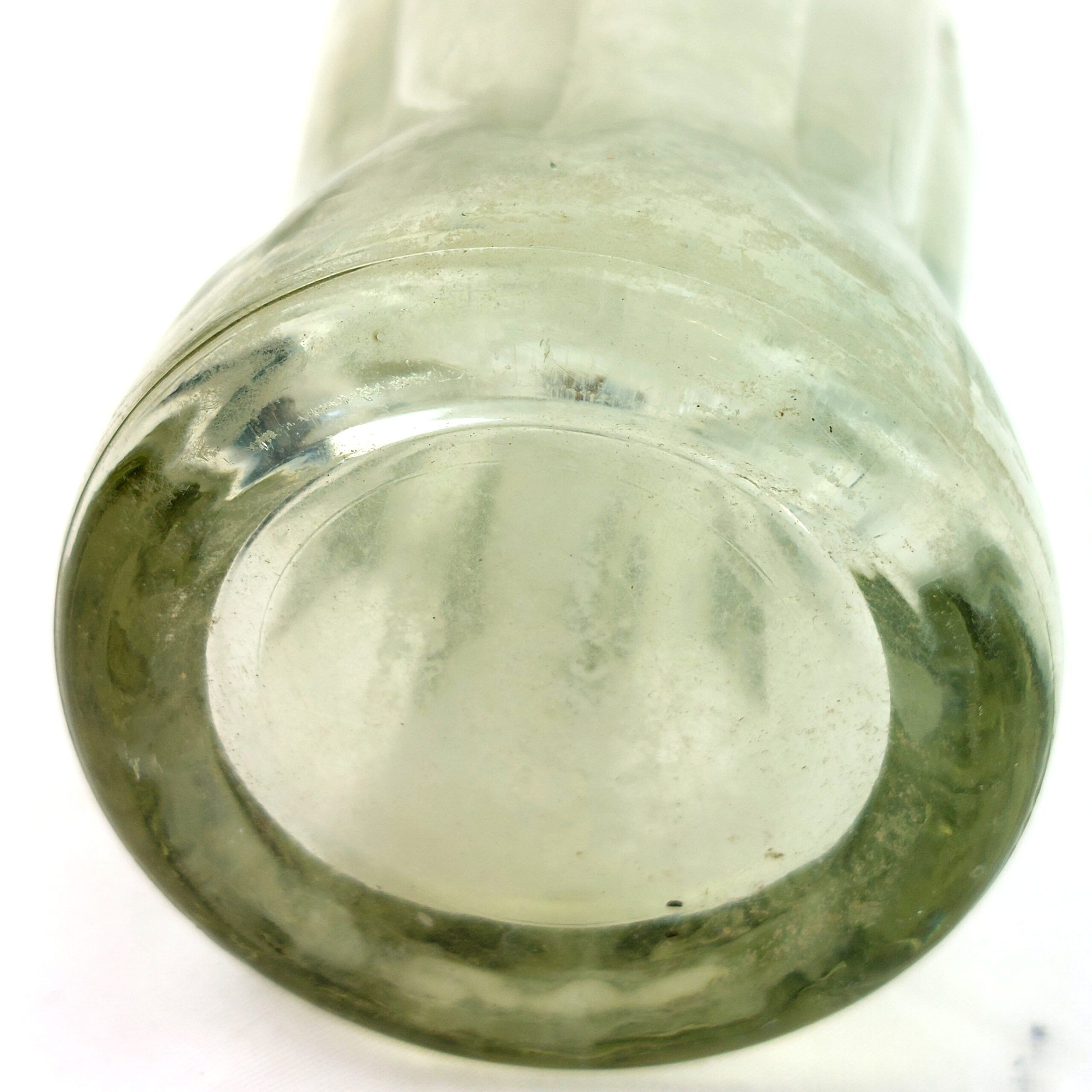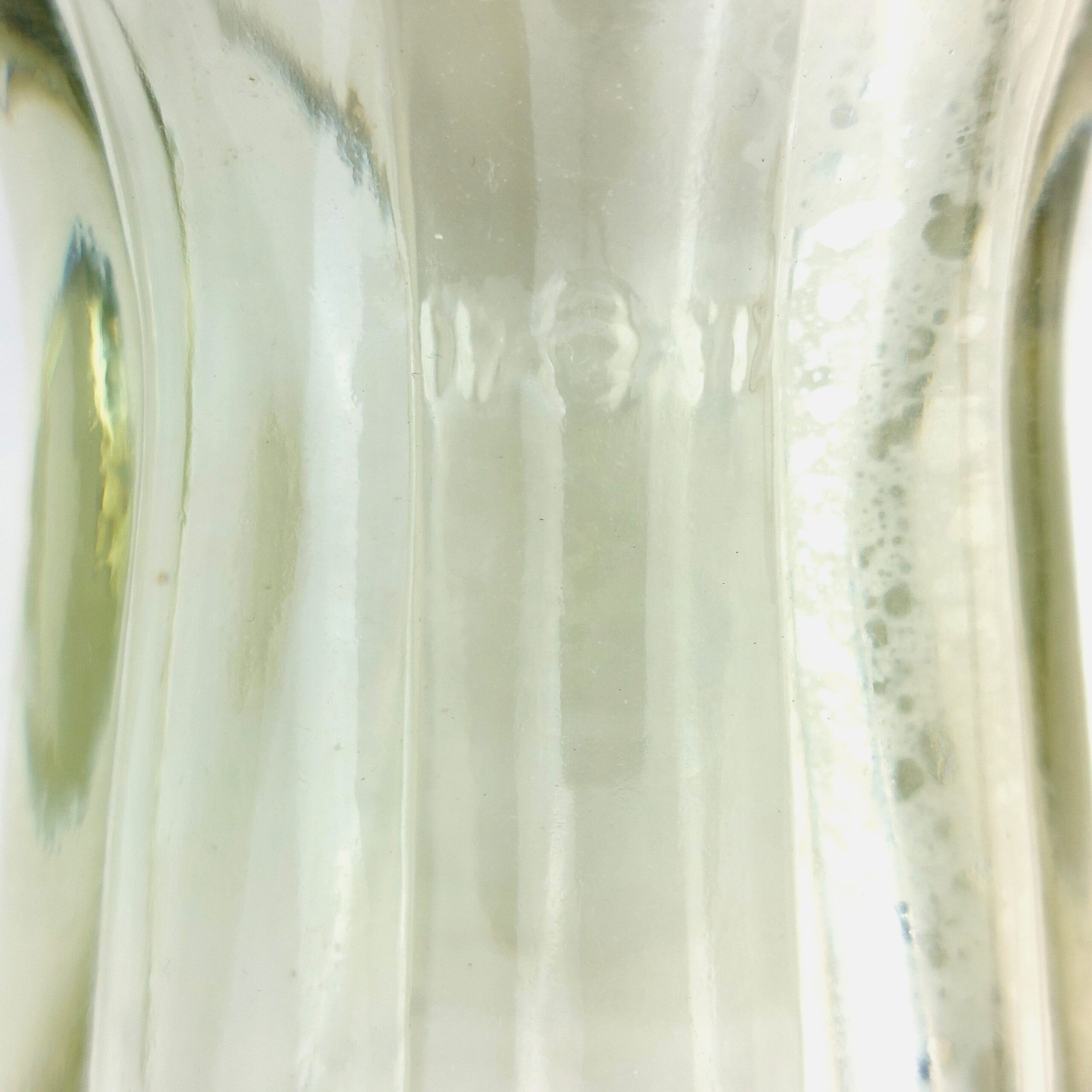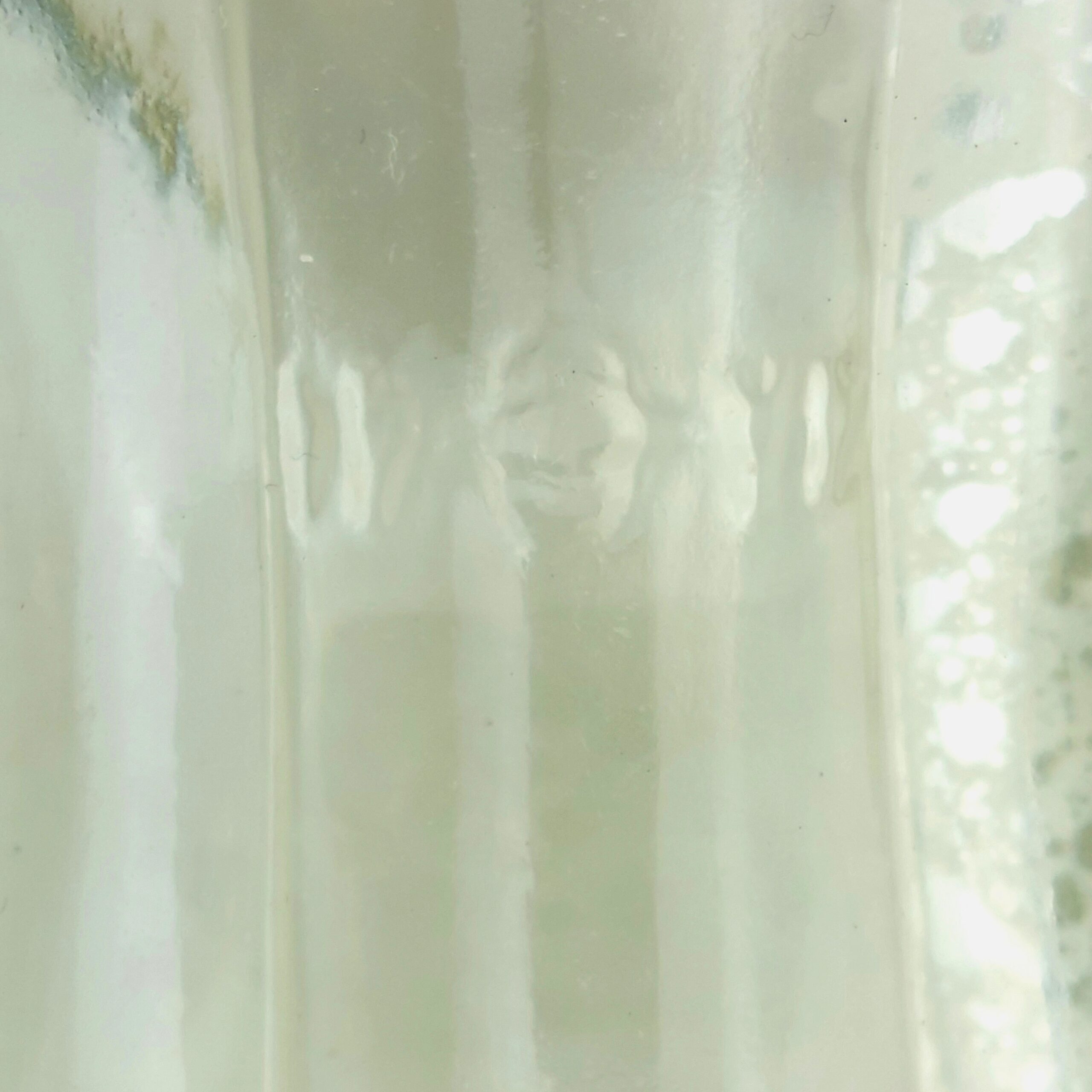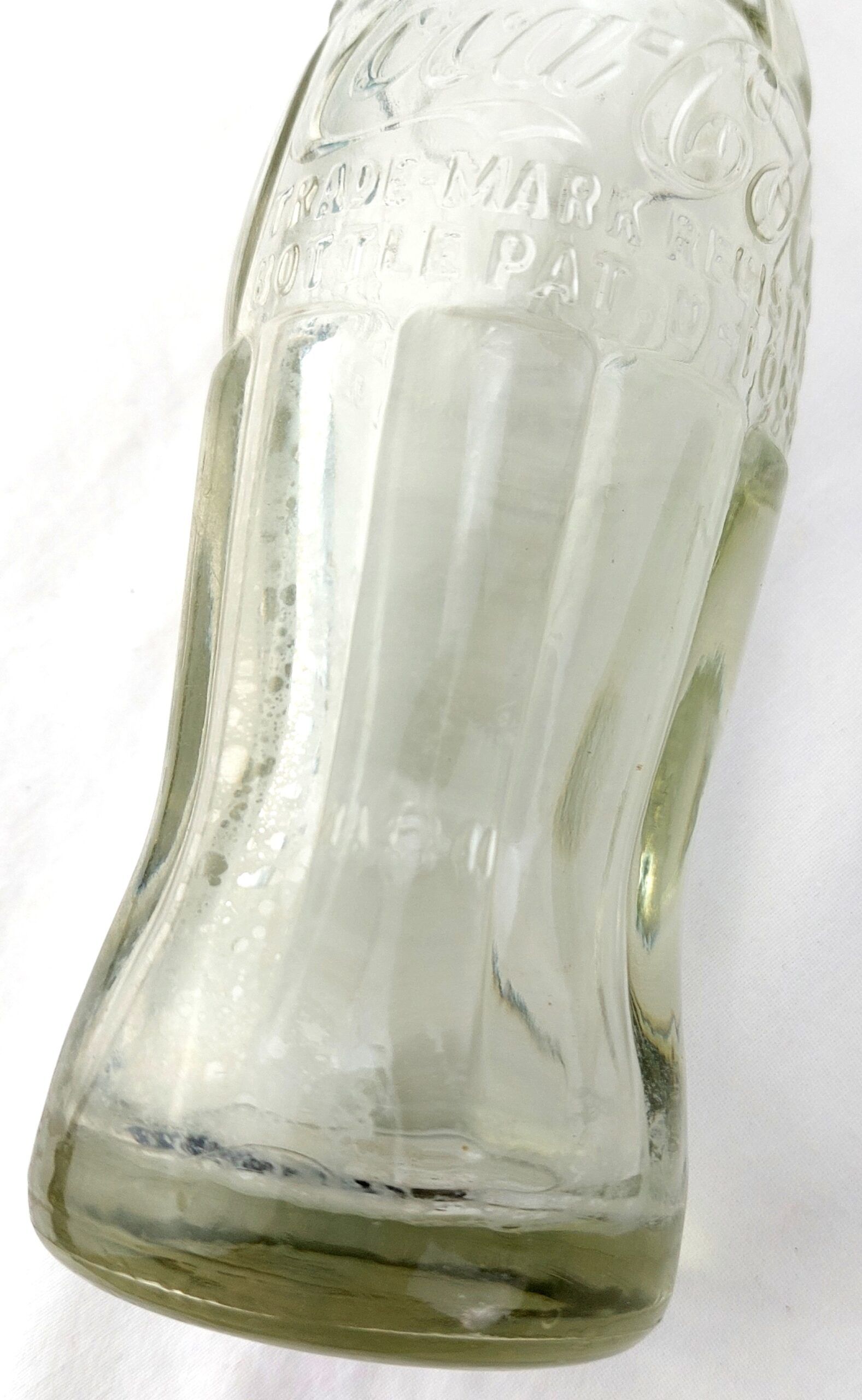*WW2, Coca-Cola Bottle, Hobble Skirt, Patent D-105529, Army Issue, dated 1944, with Cap*
Embossed:
“Coca-Cola
Trademark Registered
Min. Contents 6Fl-Ozs.
Coca-Cola
Trademark Registered
Bottle Pat. D-105529 (Patented 1937)”
No marks on the bottom. Marked on the side with the manufacture mark. Looks like KA balloon 44.
This bottle showcases the classic ‘hobble-skirt’ design, its clear/blueish glass, distinct from civilian versions with a greenish tint (caused by the copper), and a smooth bottom without the town’s name indicate its military production. Military bottles were mostly produced abroad and didn’t use the copper used domestically. These bottles were first manufactured in 1943. Embossed on both sides, it bears the iconic Coca Cola logo, Trade-Mark registered in 1937, and Bottle Pat. D-105529. A small maker’s logo appears on one lower side, and the presence of “44” to the right of the logo dates the bottle to 1944.
In 1915, facing competition and standardization challenges, Coca-Cola replaced its straight-sided bottle with a distinctive contoured design. Created by Indiana’s Root Glass Company, the “Hobble Skirt” shaped Coke bottles, patented on November 16, 1915, featured a unique shape inspired by the cocoa bean.
During World War II, Coca-Cola positioned itself as a patriotic brand, symbolizing a taste of home for American soldiers abroad. In 1941, Coca-Cola President Robert Woodruff ensured that every serviceman received a bottle for five cents, regardless of location or cost to the company.
General Dwight D. Eisenhower, impressed by early successes, requested 10 portable factories, 6 million filled Coke bottles monthly, and resources for American GIs. Executives responded by sending 148 representatives, dubbed “Coca-Cola Colonels,” to serve Coke to troops worldwide. The “Have A Coke” promotions used ads with underlying meanings, distributing over 5 billion bottles to uniformed personnel by the war’s end. War-time plants were later transformed into operational facilities.
JAQAOXBO_4826147380


